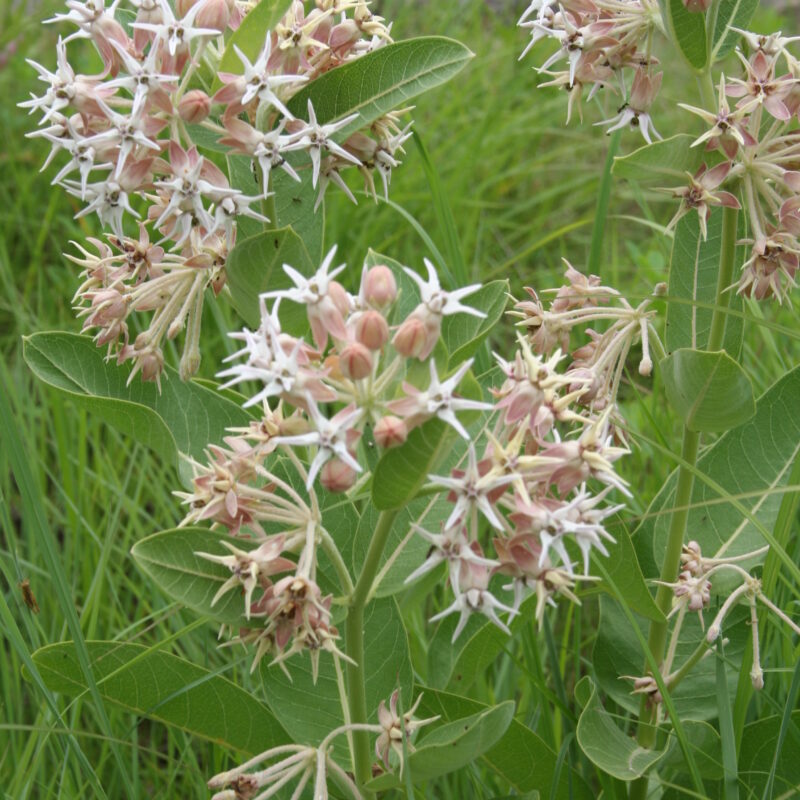Showy MilkweedAsclepias speciosa
Swamp or Rose Milkweed has pink to light purple summer blooms that emit a vanilla-like fragrance. They prefer medium to wet soils and partial to full sun conditions. A monarch favorite.
USDA symbol: ASSP
General Information
| Plant Type | Forb |
|---|---|
| Height | 2 to 4 feet |
| Light Exposure | Sun |
| Soil Moisture | Dry, Medium |
| Bloom Color | White, Pink |

Tolerances
| Flooding / Inundation Tolerance | Moderate |
|---|---|
| General Resilience | 7 |
| Salt Tolerance | None |
| Stress Tolerance | Fire Tolerant |
Pollinator Value: Very High
| Bloom Months | May to September |
|---|---|
| Larval Host of | Butterflies |
| Specific Pollinators Hosted | Danaus plexippus |
| Pollinator Benefit | Insect Pollinated, Provides Nectar, Stem Nesting, Supports Generalists |
Project Planning
| Project Type | Boulevard, Rain Garden, Shoreline Buffer |
|---|---|
| Coefficient of Conservatism | 6 |
| Herbivore Sensitivity | Low |
| Lifespan | Perennial |
| Rate of Spread | Medium |
| Soil Stabilization | Deep |
| Vegetative Reproduction | Clonal |
Range
| County | Becker, Chippewa, Clay, Cottonwood, Hennepin, Itasca, Kandiyohi, Kittson, Lac qui Parle, Mahnomen, McLeod, Nobles, Norman, Otter Tail, Pennington, Pipestone, Polk, Pope, Redwood, Stearns, Stevens, Swift, Traverse, Wilkin, Yellow Medicine |
|---|---|
| Ecoregion | Driftless Area, Lake Agassiz Plain, North Central Hardwood Forests, Northern Glaciated Plains, Northern Lakes and Forests, Northern Minnesota Wetlands, Western Cornbelt Plains |
| Approximate Eco Province | Eastern Broadleaf Forest, Laurentian Mixed Forest, Prairie Parkland, Tallgrass Aspen Parklands |
